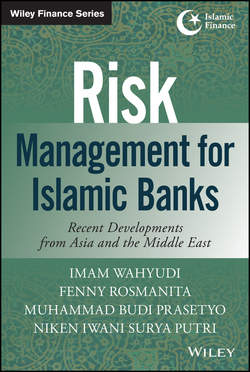Читать книгу Risk Management for Islamic Banks - Imam Wahyudi - Страница 15
На сайте Литреса книга снята с продажи.
Part One
Introduction
Chapter 2
The Islamic Bank and Risk Management
History of the Islamic Bank
ОглавлениеAn early experiment in modern Islamic banking was initiated by Abdul Aziz Ahmad El-Najjar through Myt-Ghamr Bank, established in 1963 in Egypt. With assistance in capital from King Faisal of Saudi Arabia, the Myt-Ghamr Bank was considered successful in combining German banking management with Islamic finance principles and translating that into banking products that are suitable for rural areas mostly oriented toward the agricultural industry. Due to political reasons, the Myt-Ghamr bank closed in 1967.
Initial ideas on the establishment of Islamic banks internationally began in an OIC conference in Kuala Lumpur in 1969. The participants agreed on several things, the first being that every profit must be based on the principle of profits and loss sharing, and if not, the profit would fall under the category of usury, which is prohibited in Islam. Secondly, it was recommended that an Islamic bank free from the usury system be established quickly, and that in the interim, before the establishment of such a bank, the conventional banks would still be allowed to operate as long as it were a matter of emergency. Based on the recommendations from the Islamic Economy Conference in Mecca, the Islamic Development Bank (IDB) was established in 1975. IDB had an important role in fulfilling the financing needs of Islamic countries to build infrastructure and actively provide with an interest-free guarantee based on the country's capital. The establishment of IDB also motivated many other countries to establish Islamic financial institutions.
The first Islamic bank established was a private one. Built by a group of Muslim businessman from various countries, the Dubai Islamic Bank was established in 1975. In 1977, two more Islamic banks were established: Faysal Islamic Bank in Egypt and Sudan, and Kuwait Finance House established by the Kuwaiti government. Bahrain Islamic Bank was established in 1979. Philippine Amanah Bank was established in 1973, based on a presidential decree, and Muslim Pilgrims Savings Corporation was established in 1983 in Malaysia. At the beginning of the 1980s, various countries hosted emerging Islamic banks of two general types: Islamic commercial banks and Islamic investment institutions.
